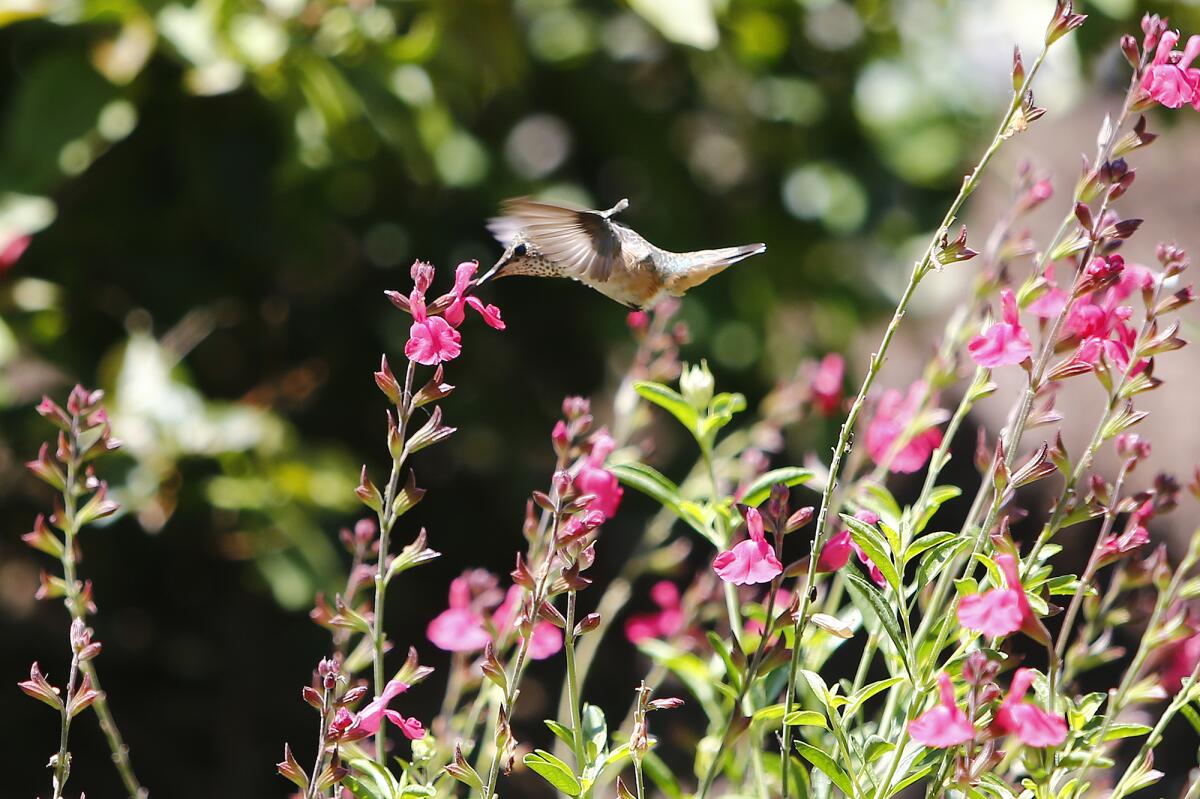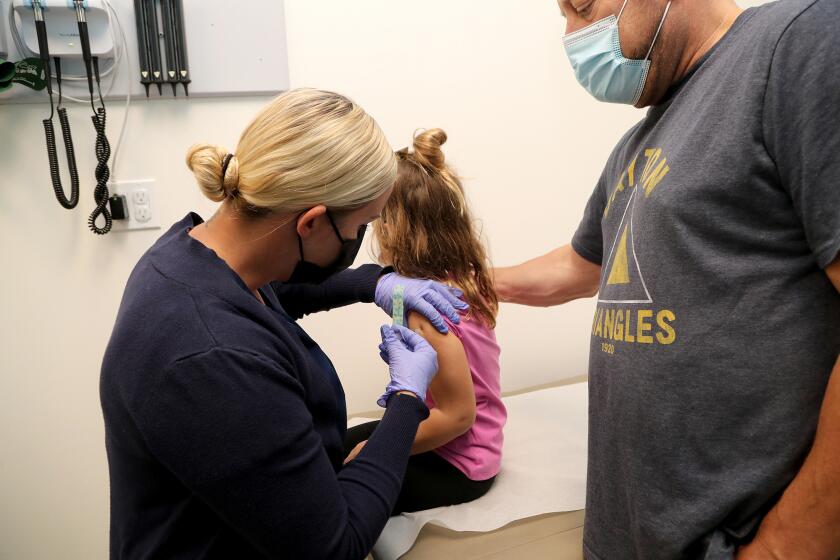Apodaca: The big purpose behind a small upgrade at Blue Heron Park

- Share via
Tucked away in a serene residential neighborhood in Newport Beach’s Eastbluff community lies Blue Heron Park, a recreational rectangle boasting a thick emerald-colored carpet of newly laid turf; swings, slides, a tether ball set and other playground gear; a free library box and lovely pine trees with twisty branches bent so low to the ground they’re just begging to be climbed.
Soon a change is coming to this little slice of suburbia — one that might easily be overlooked. But it shouldn’t because it could serve as a model and inspiration for similar projects throughout the region.
The Eastbluff Homeowners Community Assn. will first rip out the ice plant located on a small slope at one side of the park. Ice plant, which is not native to California, is what the state’s Department of Fish and Wildlife calls “a coastal invader” that chokes out native plants and damages soil composition.
In its place, the homeowners group will develop a “Butterfly Garden” filled primarily with native plants that attract pollinators and require minimal water and maintenance.
Another patch across the way, by the “Blue Heron Park” sign, will receive a similar treatment. At some point a third area might also be replanted.
If all goes according to plan, these spots will soon attract a bevy of butterflies, most notably monarchs. And who doesn’t love butterflies? Aside from their beauty, however, there’s a practical component to this project. Butterflies are amazing pollinators, and their continued existence is in jeopardy.
Last year, monarchs were classified as endangered, as their numbers have been decimated by pesticide use, urbanization, climate change and a loss of native plants. Not only will Eastbluff’s inviting new landscape provide a nurturing environment for monarchs, it will also attract hummingbirds and other pollinators that we humans depend upon for our own survival.
From the culture war affecting grade schools to vaccine hesitancy, the new year seems to have picked up the baggage from the last one, suggests Daily Pilot columnist Patrice Apodaca.
The project is the brainchild of Tom Roche, a retired business executive and Eastbluff resident who is a member of the homeowners association board. (Full disclosure: He is a longtime family friend.)
A light bulb went off for Roche after he read an article in the Daily Pilot last summer, by staff writer Matt Szabo, about the Laguna Beach-based Pollinator Protection Fund. The nonprofit was founded in 2021 by Laura and Michael Ford with the goal of restoring the natural habitat for monarchs and other pollinators.
The focus of that story was on the Pollinator Protection Fund’s work at Bluebird Park in Laguna Beach.
“I thought, man, maybe they can help us,” said Roche. “It’s a win-win.”
He raised the idea for a butterfly garden in Blue Heron Park with the Eastbluff HOA board last November and was met with a few questions and concerns about the cost. Eventually they settled on a plan. The board would authorize paying up to 50% of the cost, or a maximum of $10,000, with the remainder of the funds to come from the community.
Roche set about raising the money from residents and local businesses. No one said ‘no,’ and by the Feb. 5 deadline all the necessary funds had been pledged. The board granted its conditional approval for the project at its Feb. 6 meeting.
The planting, supervised by the Fords at the Pollinator Protection Fund, will begin as soon as the pledged donations are collected and final plans are approved. Preliminary plans. Their plans call for a variety of pollinator friendly vegetation — lemonade berry and desert willow trees; native lavender, goldenrod, verbena, sun drops, sage and many other plants.
By March or April, Roche is hoping to stage a community event at the park to introduce residents to the new garden. A large sign will be installed to educate visitors about the new plantings and their benefits.
Fellow Eastbluff homeowners association board member and co-chair of the parks committee Nancy Kerr, who enthusiastically supported the project, referred to the new garden as “a little thing we can do” to make a positive difference in the world.
But from little things, bigger things can grow.
In Orange County we have nearly 5,000 HOAs. Imagine if every one of those associations decided to launch a similar effort to welcome pollinators with the plants that they need to survive and thrive, such as the native milkweed where monarchs lay their eggs and which the caterpillars eat.
“I think that working with HOAs is going to be an integral part of what we do,” said Laura Ford. “In order to help endangered bees and monarch butterflies we need to work together.”
Individuals can also contribute. Many already are.
For example, at Roger’s Gardens in Corona del Mar, sales of native plants doubled last year from the year before, and in 2021 they had nearly doubled from 2020, said general manager Ron Vanderhoff.
“If everyone plants one or two native milkweed plants, that could make a big difference on the monarch crisis,” he said.
There’s so much going wrong in our world today; it often feels as if the bad news is unrelenting, and it’s tempting to give in to cynicism and despair.
But there’s another way to go. Perhaps learning about a community effort to do some good can serve as a reminder that each of us can do our bit to plant seeds of hope.
All the latest on Orange County from Orange County.
Get our free TimesOC newsletter.
You may occasionally receive promotional content from the Daily Pilot.







